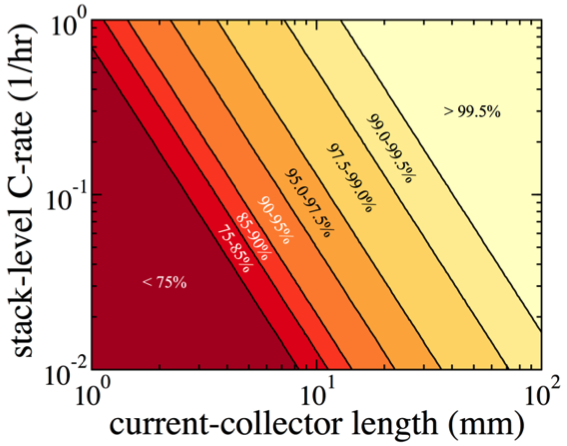
Scientific Achievement
- Flowable suspensions that conduct both electrons and ions can enable the use of energy-dense electroactive species in flow batteries
- Such electronically conductive suspensions permit electrochemical reactions to extend outside of the physical confines of a flow battery’s stack
- Here we have measured and modeled how simultaneous electron and ion conductivity enables an electroactive zone (EAZ, in which electrochemical reactions occur) that is of greater spatial extent than current collectors, the extension being termed side zone, SZ
Significance and Impact
Electrochemical reactions in SZs can reduce coulombic and energetic efficiency. Here we show that for realistic suspension properties and operating conditions, the added inefficiency can be mitigated
Research Details
- A non-aqueous Li4Ti5O12 suspension was tested
- EAZ extension was measured experimentally using a lab-scale cell with various current-collector lengths and was simulated with a porous-electrode model to interpret charge-transfer mechanisms
- An analytical model was used to map energy-efficiency losses
Work performed at Massachusetts Institute of Technology (JCESR Collaborator). K.C. Smith, V.E. Brunini, Y. Dong, Y.-M. Chiang, and W.C. Carter, Electrochimica Acta, 2014.

